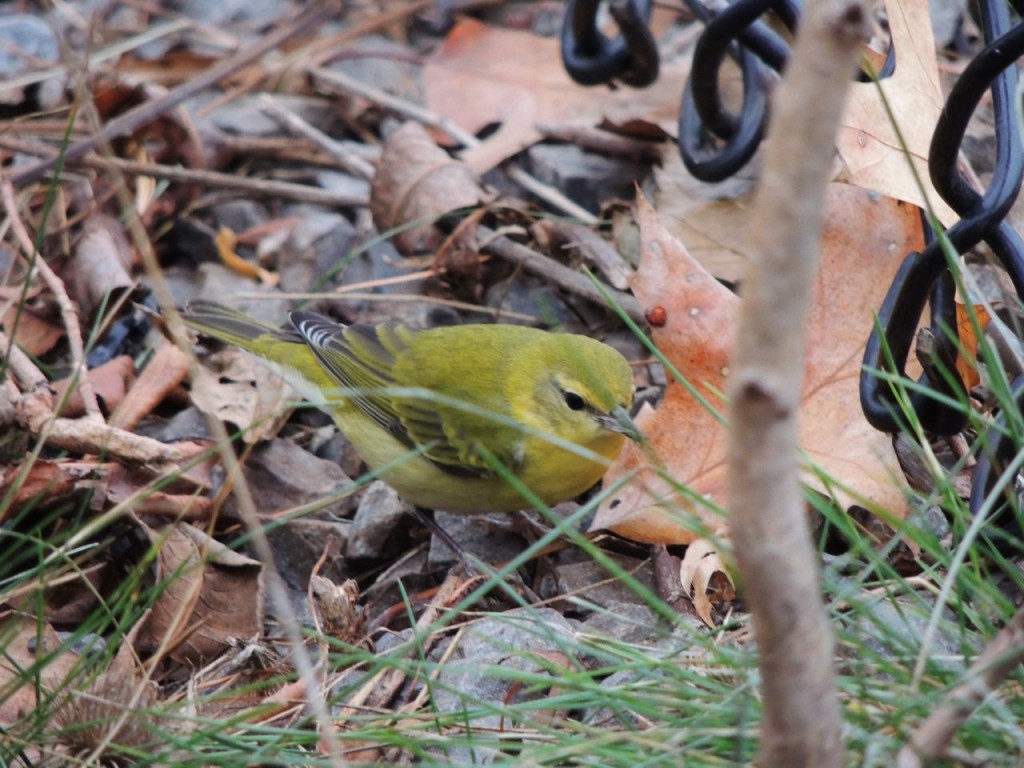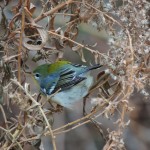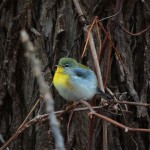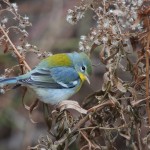5 December 2014. Oakville ON. If you’re looking for the perfect Christmas present for the birder in your life, you might want to consider a field trip to a sewage treatment plant; he or she will surely love it! These past two days, I’ve spent a couple of morning hours at a treatment plant not far from home; it has a lot going for it really: free parking, out of the wind and crowds are small.
I should probably explain. It’s not that birders really like the sewage treatment plant itself, it’s the unusual and unexpected birds that hang around there that make them special. The ponds of warmish, biological froth generate lots of flies and mosquitoey things which are perfect for small insectivorous birds. Apparently some birds on the fall migratory trek are seduced by this man-made warmth and food and, ignoring their instincts (which would be telling them they’ve got another two thousand kilometers to go) decide to hang around. If their gamble pays off they will have a head start next spring and could reach and claim prime breeding sites ahead of anyone else. But chances are that sooner or later the winter will bite really hard, the insect life will dwindle to nothingness and the birds will perish; it’s a gamble, maybe even a microcosm of evolutionary effort. The only probable winners are the birders who hold their noses and prowl the perimeter on the lookout for special birds; I was one of them.
I’d heard there were Winter Wrens, Golden-crowned and Ruby-crowned Kinglets and several warbler species to be found. I was lucky to see many of them and more besides; the best in many ways was a Northern Parula. Parulas are always breathtakingly beautiful, today’s bird certainly was. They can be devilishly difficult to photograph because they rarely stay still, usually hang around well above eye level and seem to bury themselves deep in the overhead foliage; today’s bird actually did quite the opposite and although it was hunting for food, it well, judge for yourself…
(The parula is in a gallery visible only on the website, not if you’re reading this as an email.) An Orange-crowned Warbler, a much overlooked and rarely encountered species was there too, as were a couple of Yellow-rumped Warblers, a Tennessee and a Wilson’s Warbler, all marvelous birds at any time.



